 |
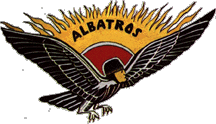 |
 |
|
Fokker A.III (E.III)
1916
Weight:1342
Ceiling:12000
Speed:87.5
Armament: 2 Parabellum MG |
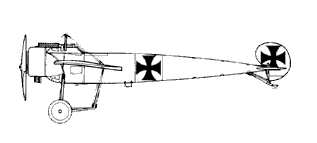 |
Thirteen Fokker E.IIIs were sold to Austria-Hungary. The pilots of the Dual Monarchy were under strict
orders from the German High Command not to endanger the gound breaking craft by flying over the enemy lines.
Consequently, in Austria as in Germany the Fokkers were used purely defensively. The success of the Fokker was not
due to its flying abilities but rather its ability to shoot though the arc of its own propellor. During an interview
In 1977, Austrian ace Gottfried Banfield confirmed that the A.IIIs operated by the Austro-Hungarian Navy were painted
a pale grayish-green.
|
Hansa-Brandenburg D.I (KD)
1916 - 1917
Weight: 2024
Ceiling:16405
Speed:116
Armament:1 Schwarzlose MG |
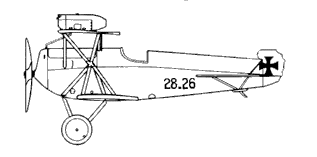 |
The Hansa-Brandenburg D.I KD (Kampf Doppeldecker) perhaps earned more nicknames than any other WWI
fighter. When it was introduced it was quickly dubbed the "spinne" (spider) due to its bizarre strut arragement.
Once pilots became aware of the plane's innate instability they quickly named it "sarg" (coffin). Even the drag
inducing enclosure for the wing mounted machine gun became known as a "baby coffin". This was one of Ernst Heinkel's
first fighter designs and it certainly was not his most successful. Even so, it was the standard Astro-Hungarian
fighter from late 1916 to mid 1917.
|
Aviatik D.I (Berg Scout)
1917-1918
Weight:1815 -1906
Ceiling:20400
Speed:115
Armament: 2 Schwarzlose MG |
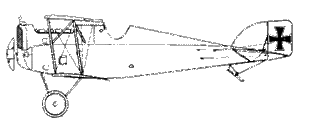 |
The Berg Scout had excellent flying characteristics and an enviable rate of climb. Though early
models suffered from structual weakness of the wings later models prooved their mettle. With a 6 cylinder
Austro-Daimler in-line engine the plane was a fast fighter. But, throughout its career the it suffered from engine
overheating and various radiator arrangements were tried to overcome this deficiency. On early models only one machine
gun was mounted on the top wing. Later models had two guns mounted on either side of the engine or in front of the
cockpit. The Berg's fuselage was deep but the pilot sat well up and enjoyed and excellent field of view.
|
Albatros D.III (Oef.)
1917 - 1918
Weight: 1947
Ceiling: 18000
Speed: 115.5
Armament: 2 Schwarzlose MG |
 |
The Austrian firm of Oeffag built three series of the German Albatros D.III under license for the
Dual Monarchy. Austrian pilots were delighted with the new plane and it became a mainstay of the Austro-Hungarian
air services. The third and final series was supplied with the 225 h.p. Austro-Daimler engine which provided a extra
6.5 miles an hour over the German Mercedes. Due to the enlarged size of this engine, the fuselage nose was enlarged
slightly with a more rounded profile and the spinner was removed. This did not cause any heartache to the Austrian
pilots since the spinners frequently flew off during flight and posed significant threat to their health! The engine
cowling was frequently removed from these planes to provide better cooling in hot weather.
|
Phönix D.I
1917 - 1918
Weight: 1771 (D.I, D.II), 1831 (D.III)
Ceiling:19685
Speed: 112.5 (D.I, D.II), 125 (D.III)
Armament: 2 Schwarzlose MG |
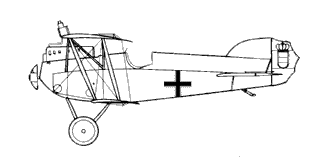 |
The Phönix Aeroplane Works of Vienna gained design experience by building the Berg fighter during
1916 and 1917. When it became obvious that the Berg could be developed no further, Phönix set out to design a
replacement. The result was the Phönix D series of fighters. After overcoming the normal early structual weakness
problems, the Phönix D.I proved to be a match for the Italian Hanriot and SPAD fighters that were its constant
opponents. The Phönix D.I, D.II and D.III were almost identical in form and performance. The main difference was
that the D.II had balanced ailerons and the D.III had ailerons on both the upper and lower wings. The Phönix fighters
were used by both the Army and Navy of the Dual Monarchy. These planes are described as fast and unstable or fast and
stable in conflicting sources. The Phönix fighter was used by Sweden for years after WWI.
|
Banfield's Flying Boats
1916
Weight:
Ceiling:
Speed:
Armament:
|
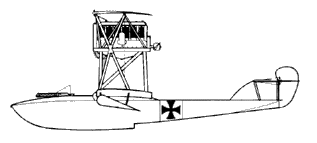 |
boat stuff
|








